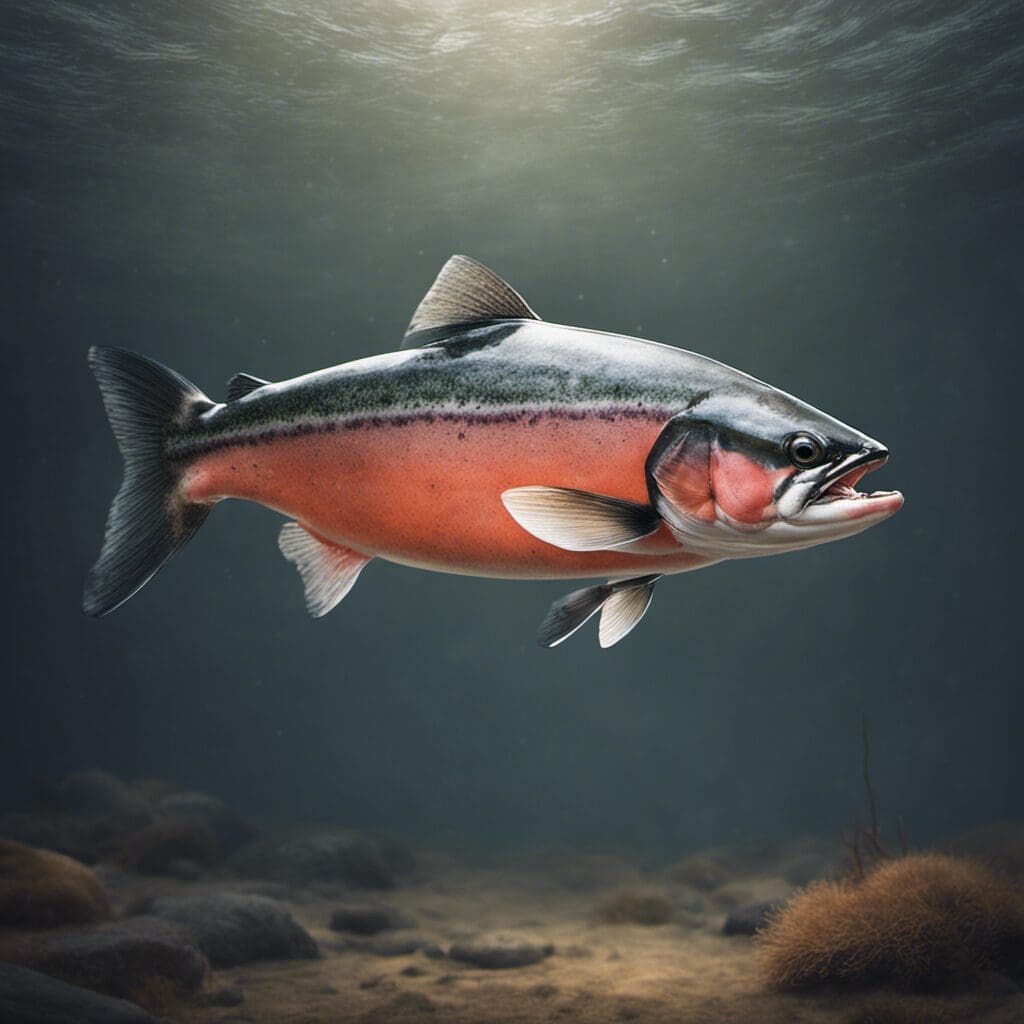Introduction
The Chum Salmon, also known as the Dog Salmon, is a species belonging to the Salmonidae family. This fish is best recognized by its metallic, blue-green back with silver sides and belly, which change drastically during their spawning period.
Conservation Status
The Chum Salmon has a conservation status of “Least Concern” according to the International Union for Conservation of Nature (IUCN). Efforts to conserve Chum Salmon include regulating fishing quotas, implementing seasonal fishing restrictions, and preservation of their natural habitats.
Statistics
The following table organizes the key statistics about the Chum Salmon:
| Average | Range | |
|---|---|---|
| Length | 80 cm | 60-100 cm |
| Weight | 7 kg | 4-15 kg |
| Average Lifespan | 6-7 years | — |
Distribution
The Chum Salmon can be found largely in the Northern Pacific Ocean and its adjacent seas, notably around the coastal waters of Japan, Canada, United States, and Russia. They are also known to migrate to fresh water to spawn.
Habitats
Chum Salmon are anadromous, meaning they live in both fresh and saltwater habitats. They prefer cold water temperatures between 0-15° C (32-59° F) and can reach depths of up to 90 meters.
When and Where to See
You’re most likely to spot Chum Salmon between June to October, with the highest presence in September. They are most active during twilight and nighttime hours.
Best Fishing Locations
Here are some of the top locations for Chum Salmon fishing:
- Puget Sound, Washington, USA
- Skeena River, British Columbia, Canada
- Nushagak River, Alaska, USA
- Frazer River, British Columbia, Canada
- Kenai River, Alaska, USA
How to Catch
Chum Salmon are known to bite on spoons, spinners, and plugs, with pink and chartreuse being attractive colors. Fly fishing and trolling techniques are commonly used. Fishing during early morning and late afternoon tends to yield the best results.
Identification Guide
In addition to their metallic, blue-green back and silver sides, Chum Salmon can be identified by their large teeth during spawning season. They have a robust body compared to other salmon species.
Culinary
Chum Salmon are often smoked or canned due to their lower fat content compared to other salmon species. They have a medium-firm texture and a mild flavor. Their roe is highly prized in Japan and often used for sushi.
Additional Information
Chum Salmon primarily consume zooplankton, insects and small fish. Predators of Chum Salmon include larger fish, birds, and bears. They have also a cultural significance for indigenous peoples residing in the Pacific Northwest, particularly in their folklore and traditions.
References and Further Reading
For further information, check resources such as Fishbase, NOAA Fisheries, and Marine Bio. These offer updated data about the Chum salmon’s conservation, behavior and ecological role

